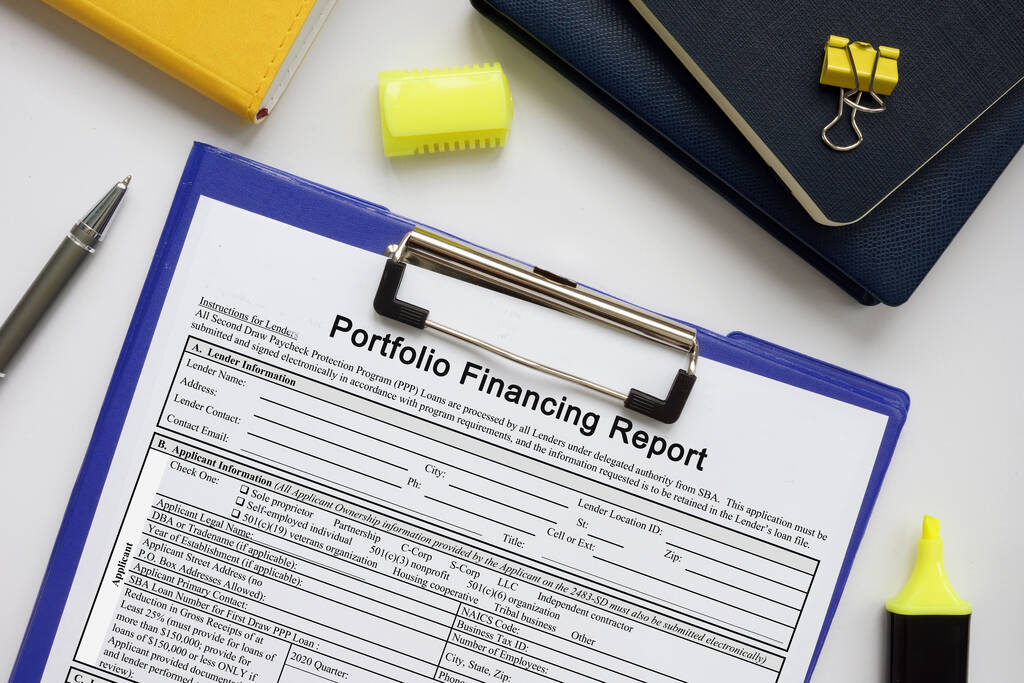Home » Finance
Category Archives: Finance
Unlocking Profit Potential: Airbnb Loans and Investment Strategies
Are you intrigued by the prospect of making money through Airbnb but find yourself short on funds? Don’t worry; there are financing options available to help you kickstart your Airbnb investment journey. In this comprehensive guide, we’ll delve into Airbnb loans, the concept of Airbnb arbitrage, investment strategies, and tips on getting approved as an Airbnb host.

Does Airbnb Allow Financing?
The short answer is yes, but let’s dive into the details. Airbnb itself does not directly offer financing or loans to hosts. However, several financing options can help you secure the capital needed to invest in Airbnb properties:
- Traditional Loans:
You can apply for a mortgage or home equity loan to purchase a property that you intend to use as an Airbnb rental.
Keep in mind that your credit score, income, and other financial factors will play a significant role in your ability to secure a loan.
- Airbnb Financing Programs:
Some companies offer specialized financing programs designed for Airbnb hosts. These programs are tailored to the unique needs of short-term rental property investors.
Research and compare different Airbnb financing options to find the one that suits your situation best.
What Is Airbnb Arbitrage?
Airbnb arbitrage is a popular strategy among short-term rental property investors. It involves renting a property on Airbnb and then re-listing it on the platform to generate a profit margin. Here’s how it works:
Lease a Property: You lease a property, typically from a landlord, with the intention of subleasing it on Airbnb. Ensure that your lease agreement allows for subleasing or short-term rentals.
Furnish and List: Once you have secured the property, furnish it and create an appealing Airbnb listing. Take high-quality photos and write a compelling description.
Generate Bookings: Your goal is to generate bookings on Airbnb at a rate that covers your lease expenses and leaves you with a profit.
Manage Bookings: Act as a host by communicating with guests, ensuring a pleasant stay, and handling any issues that arise during their stay.
Profit: The difference between what you earn from guests and what you pay in rent and other expenses is your profit. Successful arbitrage relies on careful management and optimizing occupancy rates.
How Can I Invest My Money in Airbnb?
Investing in Airbnb can be a lucrative venture, but it’s essential to have a solid strategy in place. Here are some steps to consider:
- Research and Location:
Identify a location with high demand for short-term rentals. Consider factors like tourism, business travelers, and local events.
- Financing Options:
Explore financing options, as mentioned earlier, to secure the funds needed for your Airbnb investment.
- Property Selection:
Choose a property that aligns with your budget and investment goals. Consider factors like size, amenities, and potential for growth.
- Furnishing and Listing:
Create an attractive Airbnb listing with professional photos and an engaging description.
- Pricing Strategy:
Set competitive pricing based on market research. Adjust rates seasonally and in response to demand.
- Property Management:
Decide whether you’ll manage the property yourself or hire a property management company to handle guest communication, cleaning, and maintenance.
- Continuous Improvement:
Continuously seek ways to improve the guest experience, garner positive reviews, and increase your occupancy rates.
How Do You Get Approved for Airbnb?
To become an Airbnb host and start earning income from your rental property, follow these steps:
- Create an Airbnb Account:
Sign up on the Airbnb platform and complete your profile.
- Property Listing:
Create a detailed listing for your property, including high-quality photos, accurate descriptions, and pricing details.
- Verification:
Complete the host verification process, which may include providing identification documents and verifying your phone number.
- Set House Rules:
Clearly define the rules and expectations for guests staying at your property.
- Calendar and Availability:
Set up your property’s availability calendar to specify when it’s open for bookings.
- Booking Settings:
Choose your booking preferences, including instant booking or pre-approval.
- Host Protection:
Review Airbnb’s host protection program to understand the coverage it offers.
- Communicate Responsively:
Respond promptly to guest inquiries and booking requests to build trust and improve your search ranking.
By following these steps and delivering exceptional guest experiences, you’ll increase your chances of getting approved as an Airbnb host.

In conclusion, Airbnb loans can provide the financial support you need to kickstart your Airbnb investment journey, while Airbnb arbitrage offers a unique strategy to generate income. When investing in Airbnb, thorough research, smart financing, and dedicated property management can help you achieve your financial goals. Getting approved as an Airbnb host is a straightforward process if you follow the platform’s guidelines and provide excellent service to your guests. Start your Airbnb journey today and unlock the potential for profitable short-term rental investments.
Learn more at Wiki as well.
Unlocking Real Estate Wealth: Understanding the BRRRR Strategy
If you’re diving into the world of real estate investment, you may have come across the intriguing acronym “BRRRR.” It’s not just the chilly sound you make when it’s freezing outside; it’s a powerful real estate investment strategy. In this blog post, we’ll break down the meaning of BRRRR, provide an example, and discuss its potential disadvantages.

What is the Meaning of BRRRR?
BRRRR stands for Buy, Rehab, Rent, Refinance, Repeat. It’s a real estate investment strategy that has gained popularity for its potential to create wealth through property acquisition and renovation. Let’s explore each of these steps in more detail:
Buy: The first step is to purchase a property, typically at a below-market value price. Investors often look for distressed or undervalued properties.
Rehab: After acquiring the property, investors renovate or rehabilitate it to increase its value. This step involves making necessary repairs and improvements.
Rent: Once the property is in good condition, it’s rented out to tenants. Rental income is a crucial part of the BRRRR strategy, as it provides ongoing cash flow.
Refinance: After the property is renovated and rented, investors can refinance it. This involves taking out a new mortgage loan based on the increased value of the property. The goal is to pull out the initial investment capital or a substantial portion of it.
Repeat: With the capital returned from the refinance, investors can repeat the process by acquiring and rehabilitating another property. This cycle continues to build wealth over time.
What is an Example of BRRRR?
Let’s illustrate the BRRRR strategy with a hypothetical example:
Imagine you purchase a run-down property for $80,000, well below its market value, and invest $20,000 in renovations to make it more appealing. After the renovations, the property’s appraised value increased to $120,000. You decide to rent it out for $1,200 per month.
Once the property is rented and stabilized, you refinance it with a new mortgage loan based on the appraised value of $120,000. Let’s say you’re able to secure a loan for 75% of the appraised value, which amounts to $90,000. With this refinance, you not only recover your initial $100,000 investment (purchase price plus renovations) but also have an additional $10,000 to use for your next investment. You’ve successfully executed the BRRRR strategy.
What are the Disadvantages of BRRRR?
While the BRRRR strategy offers numerous benefits, such as building wealth and generating passive income, it’s essential to be aware of potential disadvantages:
Market Volatility: Real estate markets can be unpredictable. Property values may not always appreciate as expected, which could affect your refinancing plans.
High Initial Capital: BRRRR typically requires a significant amount of capital to purchase and renovate properties. If you don’t have access to sufficient funds, it may not be the right strategy for you.
Management Challenges: Managing rental properties can be time-consuming and comes with its own set of challenges, including tenant issues and property maintenance.
Risks of Over-Leveraging: Refinancing properties to pull out capital can lead to over-leveraging if not done carefully. High levels of debt can be risky if market conditions change unfavorably.

The BRRRR strategy can be a powerful tool for building wealth through real estate investment, but it’s not without its risks and challenges. Understanding the process, conducting thorough research, and carefully evaluating each investment opportunity are essential steps to success. As with any investment strategy, it’s advisable to seek guidance from experienced professionals and be prepared for both the rewards and potential pitfalls that come with BRRRR.
Learn more at Wiki as well.
Understanding the 11031 Exchange Process: A Tax-Deferred Real Estate Investment Strategy
The 1031 exchange, also known as a tax-deferred exchange, is a powerful tool for real estate investors seeking to defer capital gains taxes on the sale of investment properties. Named after Section 1031 of the U.S. Internal Revenue Code, this process enables investors to reinvest the proceeds from the sale of one property into another “like-kind” property, all while deferring the payment of capital gains taxes.

This article will provide a comprehensive overview of the 1031 exchange process, exploring its benefits, eligibility requirements, and essential considerations.
- Eligibility and Like-Kind Requirement
To qualify for a 1031 exchange, the properties involved must be held for investment or used in a trade or business. Personal residences do not qualify for this tax-deferred treatment. Moreover, the properties exchanged must be “like-kind” – meaning they should be of the same nature or character, though they do not need to be identical. For instance, a commercial property can be exchanged for a residential rental property, and vice versa, as long as they meet the like-kind criteria.
- Exchange Types: Simultaneous, Delayed, and Reverse
There are several types of 1031 exchanges. The first is the simultaneous exchange, where both properties are exchanged simultaneously. This type of exchange is relatively rare due to the challenge of finding two parties who mutually agree to such an arrangement.
The most common type is the delayed exchange, where there is a time gap between the sale of the original property and the purchase of the replacement property. The investor must identify potential replacement properties within 45 days of selling the relinquished property. The identification must be in writing and submitted to a qualified intermediary, who facilitates the exchange. The investor then has 180 days from the sale of the relinquished property, or the due date of their tax return (including extensions), whichever comes first, to complete the purchase of the replacement property.
A less common but powerful exchange type is the reverse exchange, which involves acquiring the replacement property first and then selling the relinquished property later. This type of exchange requires strict compliance with IRS guidelines and is more complex to execute.
- The Role of Qualified Intermediaries
To ensure a valid 1031 exchange, a qualified intermediary (QI) is essential. The QI is a neutral third party responsible for holding the proceeds from the sale of the relinquished property until the purchase of the replacement property is finalized. Their involvement is crucial as the investor should never take possession of the funds, as doing so would disqualify the exchange from tax-deferred status.
- Timeframes and Identification Rules
Time is of the essence in a 1031 exchange. As mentioned earlier, the investor has 45 days from the sale of the relinquished property to identify potential replacement properties and 180 days to close on one or more of those identified properties. The identification rule has two main options: the Three-Property Rule, where the investor can identify up to three properties regardless of their value, and the 200% Rule, where the investor can identify more than three properties, as long as their total fair market value does not exceed 200% of the relinquished property’s sale price.
- Boot and Partial Exchanges
In some cases, the value of the replacement property might be lower than that of the relinquished property, resulting in leftover funds from the sale. This excess cash is called “boot.” Boot is not like-kind and is, therefore, taxable. To avoid paying taxes on the boot, the investor can either reinvest the boot into the replacement property or choose to pay taxes on that amount.
- Exclusions and Limitations
While 1031 exchanges are powerful tools for real estate investors, there are some exclusions and limitations to be aware of. The primary limitation is the exclusion of personal residences. Additionally, if the replacement property’s value is lower than the relinquished property’s value, the difference will be subject to capital gains tax. Furthermore, if the investor receives “non-like-kind” property or cash outside the exchange, it will be considered taxable income.
- The End of the 1031 Exchange: Basis Step-Up
One of the most significant benefits of a 1031 exchange is that it allows investors to continually defer capital gains taxes on their real estate investments throughout their lifetime. However, when the investor dies, their heirs receive a “step-up in basis” for the inherited property. This means that the property’s value is re-established as of the date of the investor’s death, potentially eliminating the need for the capital gains tax on that property altogether.

The 1031 exchange process is a valuable tool for real estate investors seeking to defer capital gains taxes while leveraging their investments to acquire new properties. By understanding the eligibility requirements, exchange types, role of qualified intermediaries, identification rules, and potential limitations, investors can navigate the process with confidence. As with any tax-related strategy, it is crucial to consult with tax and legal professionals to ensure compliance and maximize the benefits of a 1031 exchange for a successful real estate investment portfolio.
Learn more at Wiki as well.
Delaware Statutory Trust (DST): Unlocking Diversification and Tax Advantages in Real Estate Investing
Real estate investment has long been a favored choice for wealth creation, offering opportunities for income generation, capital appreciation, and portfolio diversification. However, direct real estate ownership can be cumbersome, capital-intensive, and tax-inefficient for individual investors. Delaware Statutory Trusts (DSTs) have emerged as an innovative solution to address these challenges, allowing investors to participate in high-quality real estate projects with reduced administrative burdens and unique tax advantages.

In this article, we explore the ins and outs of DSTs and shed light on how they can benefit investors looking to optimize their real estate portfolios.
What is a Delaware Statutory Trust (DST)?
A Delaware Statutory Trust (DST) is a legal entity created under the laws of the state of Delaware, which allows multiple investors to pool their funds and invest in real estate properties. DSTs have been in existence since the 1980s, but they gained popularity after the introduction of the Revenue Ruling 2004-86 by the Internal Revenue Service (IRS). This ruling clarified that, under specific conditions, the beneficial interests in a properly structured DST can be treated as “like-kind” properties for 1031 exchanges.
One of the most significant advantages of a DST is that it offers fractional ownership, enabling individual investors to participate in institutional-grade properties that may have been otherwise out of reach due to high entry costs.
Key Characteristics of Delaware Statutory Trusts
- Passive Investment: Investors in a DST are considered passive, allowing them to enjoy the benefits of real estate ownership without active involvement in property management. A designated trustee or sponsor manages the day-to-day operations and decision-making processes.
- 1031 Exchange Eligibility: DSTs are structured to satisfy the requirements for 1031 exchanges, also known as “like-kind” exchanges. This enables investors to defer capital gains taxes by reinvesting proceeds from the sale of a property into a DST within a specific timeframe.
- Limited Liability: Like other forms of property ownership, DSTs provide investors with limited liability protection. This means that personal assets are generally shielded from the debts and liabilities of the trust.
- Streamlined Management: DSTs streamline the administrative burden of owning real estate by consolidating management responsibilities under a single trustee or sponsor, reducing the complexities associated with individual property ownership.
Benefits of Investing in a Delaware Statutory Trust
- Diversification: DSTs offer investors the ability to diversify their real estate portfolios across multiple properties and asset classes. This diversification can mitigate risk and stabilize returns by reducing the impact of underperforming assets.
- Access to Institutional-Grade Properties: DSTs often invest in high-quality commercial properties such as office buildings, retail centers, industrial complexes, and multifamily housing. These properties typically generate stable income and have the potential for long-term appreciation.
- Tax Advantages: One of the most compelling reasons to consider a DST is the potential tax benefits. As mentioned earlier, DSTs allow investors to defer capital gains taxes through 1031 exchanges. Additionally, DSTs may also pass tax deductions and depreciation benefits to their investors, further reducing the tax burden.
- Exit Strategy: DSTs typically have a defined investment period, after which the property is sold, and the proceeds are distributed to the investors. This provides an exit strategy and liquidity, allowing investors to potentially realize capital gains at the end of the trust’s life cycle.
Considerations and Risks
While DSTs offer numerous advantages, potential investors should carefully consider certain aspects before committing to a specific trust:
- Illiquidity: DSTs are illiquid investments, meaning that it can be challenging to access funds before the trust’s predetermined term ends. Investors should be prepared for a long-term commitment.
- Sponsor Selection: The success of a DST largely depends on the expertise and track record of the sponsor or trustee. Conducting thorough due diligence on the sponsor’s history and performance is crucial.
- Lack of Control: As passive investors, individuals have limited control over the day-to-day management decisions of the trust. Entrusting the sponsor to make prudent choices is essential.
- Investment Suitability: DSTs are most suitable for accredited investors who have a higher risk tolerance and a long-term investment horizon. They may not be suitable for every investor.

Delaware Statutory Trusts (DSTs) have emerged as a compelling option for investors seeking to unlock the potential of real estate without the burdens of direct ownership. By providing access to institutional-grade properties, diversification, tax advantages, and streamlined management, DSTs have gained popularity among accredited investors looking to optimize their real estate portfolios. However, like any investment, DSTs come with their share of risks and considerations, and investors should conduct thorough due diligence and consult with financial professionals before making a decision. As the real estate market continues to evolve, DSTs are likely to remain a viable avenue for achieving investment goals and building wealth through passive real estate ownership.
Learn more at Wiki as well.
Understanding the Benefits and Process of a 1031 Tax Exchange
When it comes to maximizing profits and minimizing tax liabilities in real estate transactions, investors often turn to the power of a 1031 tax exchange. This strategy, named after Section 1031 of the Internal Revenue Code, allows investors to defer capital gains taxes by reinvesting the proceeds from the sale of one property into the purchase of another like-kind property.

In this article, we will delve into the benefits of a 1031 tax exchange and explore the process involved in executing such transactions.
Section 1: The Benefits of a 1031 Tax Exchange: A 1031 tax exchange offers several compelling benefits for real estate investors. Let’s take a closer look at the advantages of this strategy:
- Tax Deferral: The most significant benefit of a 1031 tax exchange is the ability to defer capital gains taxes on the sale of an investment property. By reinvesting the proceeds into another qualifying property, investors can defer their tax obligations, potentially allowing them to accumulate more wealth and enhance their real estate portfolio.
- Increased Buying Power: A 1031 exchange enables investors to leverage the full sales proceeds from their relinquished property towards the acquisition of a replacement property. This increased buying power can facilitate the purchase of a larger or more valuable property, thus expanding the potential for future appreciation and rental income.
- Diversification: Investors can use a 1031 exchange to diversify their real estate holdings. This strategy allows them to transition from one type of property to another, such as exchanging residential properties for commercial properties or vice versa. This diversification can help reduce risk and enhance the overall stability of the investment portfolio.
Section 2: Qualification and Process: To qualify for a 1031 tax exchange, investors must adhere to certain guidelines and follow a specific process:
- Like-Kind Property: The exchanged properties must be of “like kind,” which refers to properties that are similar in nature or character, regardless of their quality or grade. For instance, an investor can exchange a residential rental property for a commercial office building or vacant land.
- Timing: There are strict timing requirements for executing a 1031 exchange. After selling the relinquished property, the investor has 45 days to identify potential replacement properties. They must provide written identification of the properties to a qualified intermediary within this timeframe. The investor then has 180 days from the sale of the relinquished property to close on the purchase of the replacement property.
- Qualified Intermediary: The use of a qualified intermediary is mandatory in a 1031 exchange. The intermediary holds the funds from the sale of the relinquished property and facilitates the acquisition of the replacement property. It is crucial to select a reputable and experienced intermediary to ensure compliance with IRS regulations.
- Title Requirement: The investor must acquire the replacement property with the same title or entity name as the relinquished property. This ensures continuity in the ownership structure and maintains the eligibility for tax deferral.
- Reinvestment of Proceeds: To defer all tax liability, the investor must reinvest all the proceeds from the sale of the relinquished property into the acquisition of the replacement property. If there is any leftover cash, it will be subject to capital gains tax.

A 1031 tax exchange provides real estate investors with a powerful tool to defer capital gains taxes, increase buying power, and diversify their portfolios. By navigating the stringent guidelines and following the proper process, investors can enjoy the advantages of this strategy. However, it is crucial to consult with tax professionals, intermediaries, and legal advisors to ensure compliance with IRS regulations and maximize the benefits of a 1031 exchange. With careful planning and execution, investors can leverage this tax-saving strategy to fuel their real estate investment success.
Learn more at Wiki as well.